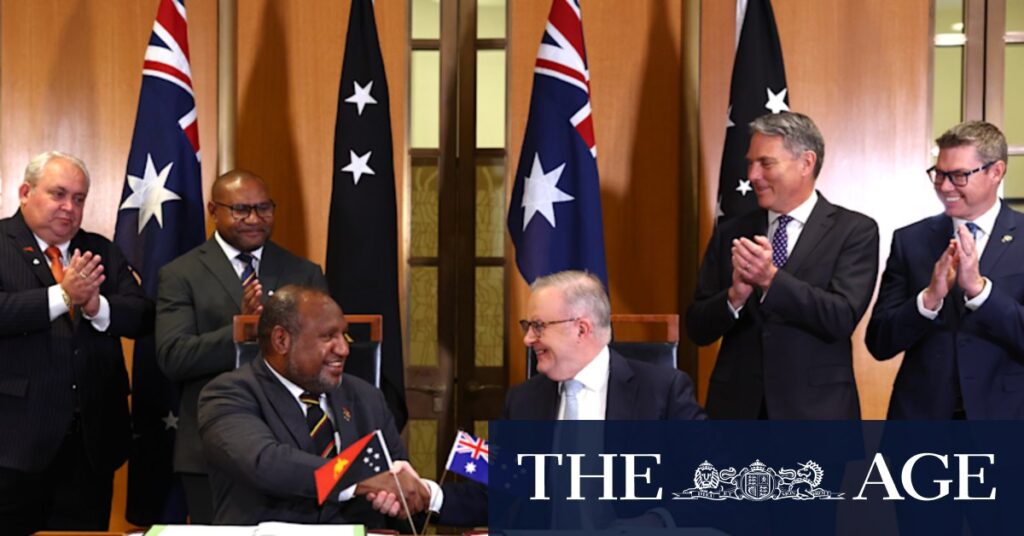
Papua New Guinea has likened its newly signed formal defense treaty with Australia to a protective fence rather than a shield against Chinese influence, as Prime Ministers Anthony Albanese and James Marape formalized the agreement on Monday. The Pukpuk Treaty, marking Australia’s first formal alliance since the ANZUS treaty of 1951, commits both nations to mutual defense and regional stability in the South Pacific, a region increasingly targeted by China’s expanding diplomatic efforts.
The treaty, initially scheduled for signing in Port Moresby last month during Albanese’s visit for PNG’s 50th independence anniversary, faced delays due to the PNG cabinet’s inability to form a quorum. Now ratified, the agreement stipulates that an armed attack on either country in the Pacific would be considered an assault on both, posing a threat to their peace and security, as well as the security of the Pacific region.
Strengthening Regional Ties
Proposed by Marape, the Pukpuk Treaty not only fortifies defense ties but also allows for cross-training and service opportunities between Australian and PNG defense forces. Speaking in Canberra, Marape emphasized that the treaty is not a reaction to geopolitical pressures but rather a formal acknowledgment of the longstanding ties between the two nations.
“This treaty was not conceived out of geopolitics or any other reason, but out of geography, history and the enduring reality of our shared neighbourhood,” Marape stated.
He further elaborated, “It is about one bigger fence that secures two houses that has its own yard space. This is not a treaty that sets up enemies but consolidates friendships.”
Australia’s Strategic Outlook
Albanese, preparing for his upcoming visit to Washington for a meeting with President Joe Biden, highlighted that Australian foreign policy rests on three pillars: the US alliance, regional engagement, and multilateralism. The Pukpuk Treaty, he noted, exemplifies these principles in action.
“This is a concrete example of Australia accepting the invitation and the idea from Papua New Guinea that we step up this relationship to an alliance,” Albanese remarked. “I see this very much as lifting our relationship to the next level.”
The treaty includes provisions preventing either nation from entering agreements with other countries that might undermine the Pukpuk Treaty. Additionally, it calls for increased joint military exercises, enhanced intelligence sharing, and the integration of citizens into each other’s defense forces.
Implications for Regional Security
Currently, PNG’s defense forces comprise approximately 3,990 personnel, primarily in the army. Under the new treaty, Marape has suggested that up to 10,000 PNG citizens could serve with the Australian Defence Force (ADF), a move Albanese believes could grow to “really substantial numbers” over time.
Albanese explained that PNG citizens will join residents of the Five Eyes nations—Australia, New Zealand, Britain, Canada, and the United States—in being eligible to serve in the ADF.
“People who are permanent residents in Australia will have the same rights as current members of Five Eyes to serve and participate in the Australian Defence Force,” he said.
This development follows a series of strategic maneuvers by both Australia and PNG to bolster their security frameworks in light of China’s increasing presence in the Pacific. Experts suggest that while the treaty is not explicitly aimed at countering China, it underscores the importance of regional partnerships in maintaining stability.
As the Pukpuk Treaty takes effect, both nations are poised to deepen their defense collaboration, setting a precedent for future alliances in the Pacific. The agreement not only strengthens bilateral ties but also reinforces the broader security architecture of the region, providing a foundation for collective action in the face of emerging challenges.







